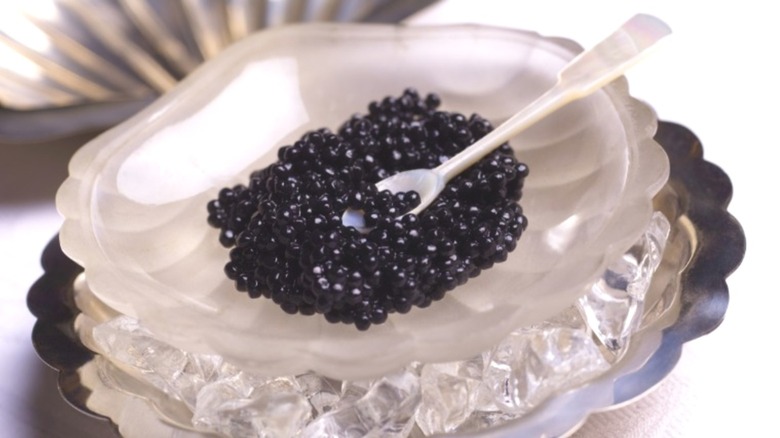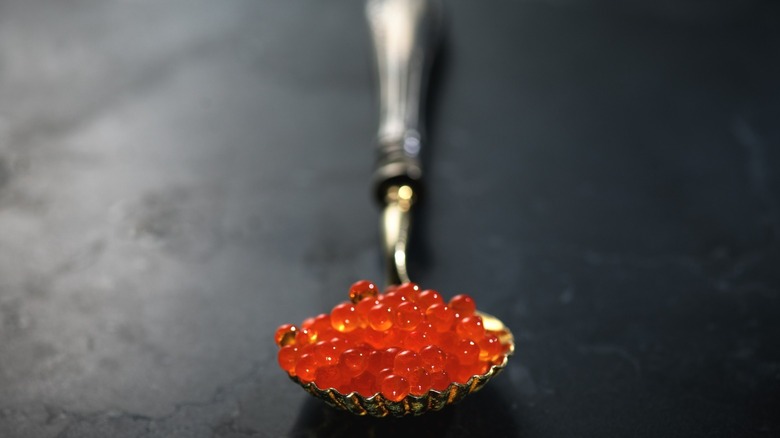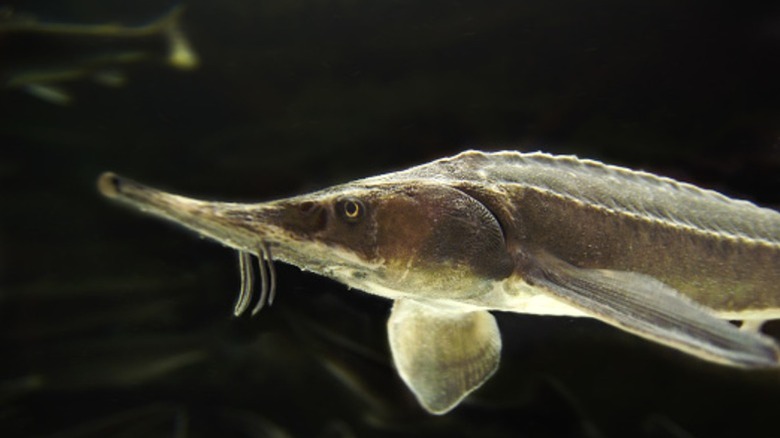The Particular Rule That Separates Caviar From All Other Fish Eggs
Caviar has become such a prominent signifier of wealth and luxury — a status symbol for rappers and influencers alike — that it can be jarring to be faced with what it really is. The delicacy that diners pay through the nose to sample is, in fact, fish eggs, which are also known as roe. While most people know this on an intellectual level, it can be rather daunting to look down at a spoonful of tiny red or black spheres that, were it not for cruel fate, might have spawned dozens of quick-swimming small fries.
If you go ahead and eat them anyway, you'll be rewarded with a rich, briny mouthful of seafood that tastes not unlike raw oyster — but it may be a taste you have to acquire, either on its own or with something like potato chips, if you're looking to feel sexy (Just don't waste it on Doritos, please). So what kind of fish produces caviar, anyway? And what, exactly, separates caviar from any old mouthful of fish eggs? The answer lies in a family of wild fish called the sturgeon.
All caviar is roe, but not all roe is caviar
In order to be officially classified as caviar, roe must come from a sturgeon. There is no such thing as "tuna caviar," even if the tuna roe is brined, salted, and served exactly as caviar might. Just as sparkling wine can only be called "champagne" if the grapes come from a certain region of France, fish eggs can only be officially called caviar if they come from that specific kind of fish.
Now, the word "officially" is doing a lot of heavy lifting in the previous paragraph. There are, in fact, many other kinds of dishes made from the roe of fish, much of which is sold as "caviar." If you're wondering why you can get red caviar for relatively little money compared to its black counterpart, that's because it's not actually caviar at all: It's roe from salmon, trout, or whitefish which, while still tasty, is much easier to come by than sturgeon roe. Another type of roe, tobiko, which frequently tops sushi, comes from flying fish.
Sturgeons have become endangered due to caviar
Depending on the kind of sturgeon the roe is extracted from, caviar can come in many different varieties. There is the ultra-luxe beluga caviar, which is sourced from the beluga sturgeon of the Caspian Sea and costs up to $300 per ounce. There's the relatively more affordable Ossetra caviar, which can cost as little as $50 an ounce (a bargain!), and there's hackleback caviar, which is from an American fish and is, as such, less prestigious (and less expensive) than its Russian counterparts.
Unfortunately, the demand for caviar is so great that it has resulted in serious overfishing, with several species of sturgeon — including the beluga, the Ossetra, and the sterlet — now being classified as endangered or critically endangered. Although there are some methods for creating more sustainable ways of harvesting caviar, including farming with a closed system that uses recycled water or harvesting sturgeon caught in the wild, it's vital to let these fish repopulate — not just for our sake, but for theirs.


